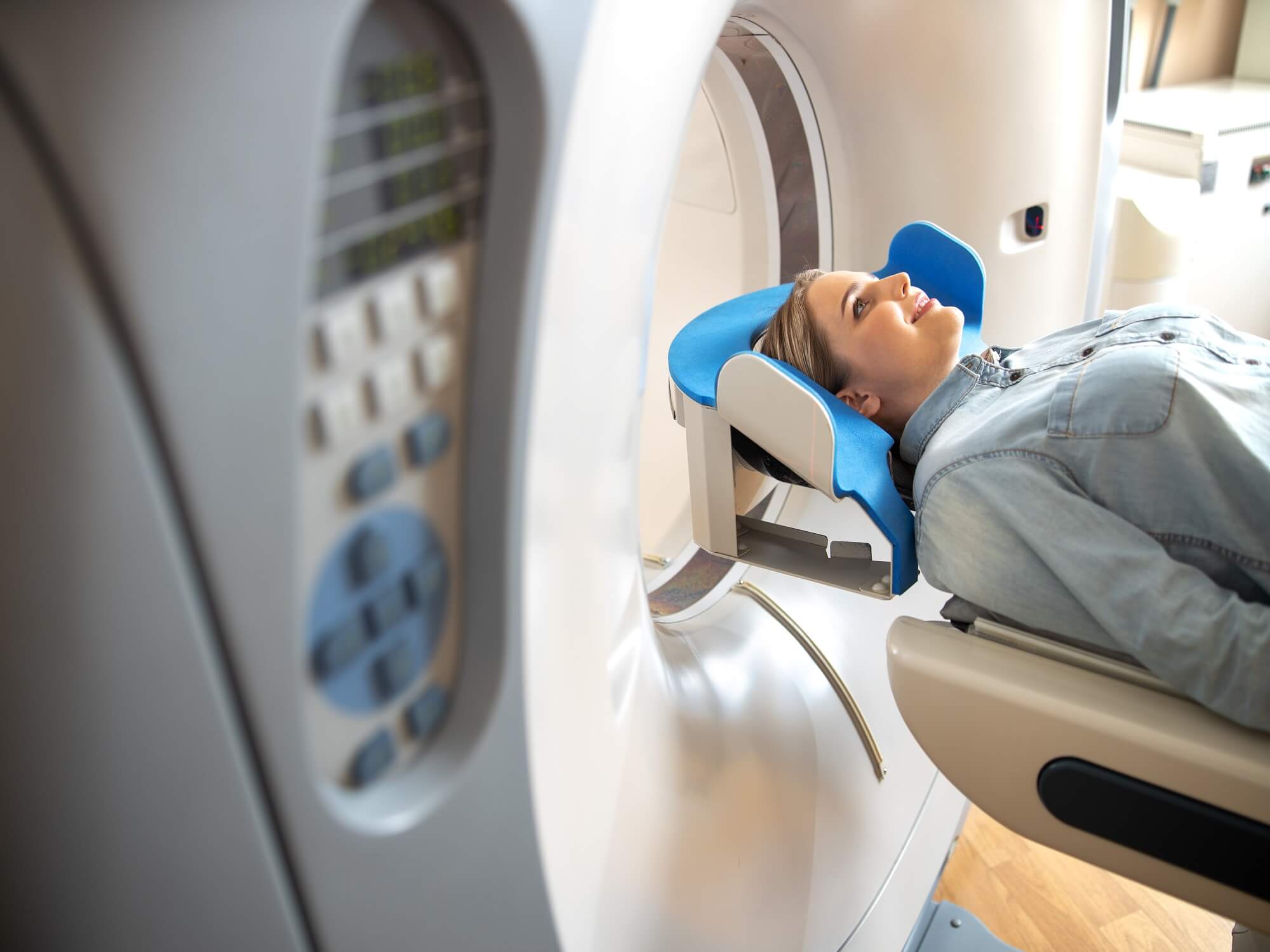CT Scanning of the Body

-
CT scanning—sometimes called Computed Tomography or CAT scanning—is a noninvasive medical test that helps physicians diagnose and treat medical conditions.
CT scanning combines special x-ray equipment with sophisticated computers to produce multiple images or pictures of the inside of the body. These cross-sectional images of the area being studied can then be examined on a computer monitor, printed or transferred to a CD.
CT scans of internal organs, bones, soft tissue and blood vessels provide greater clarity and reveal more details than regular x-ray exams
-
Why should I do it ?
- One of the best and fastest tools for examining the chest, abdomen and pelvis because it provides detailed, cross-sectional views of all types of tissue.
- Used to examine patients with severe injuries from incidents such as a motor vehicle accident.
- Performed on patients with acute symptoms such as abdominal pain or difficulty breathing.
- Often the best method for detecting many different cancers, including lung, liver, kidney and pancreatic cancer, since the image allows a physician to confirm the presence of a tumor and measure its size, precise location and the extent of the tumor's involvement with other nearby tissue.
- An examination that plays a significant role in the detection, diagnosis and treatment of vascular diseases that can lead to stroke, kidney failure or even death. CT is commonly used to assess for pulmonary embolism (a blood clot in the lung vessels) as well as for abdominal aortic aneurysms (AAA).
- Invaluable in diagnosing and treating spinal problems and injuries to the hands, feet and other skeletal structures because it can clearly show even very small bones as well as surrounding tissues such as muscle and blood vessels.
-
In pediatric patients, CT is rarely used to diagnose tumors of the lung or pancreas as well as abdominal aortic aneurysms. For children, CT imaging is more often used to evaluate:
- Lymphoma
- Neuroblastoma
- Kidney tumors
- Congenital malformations of the heart, kidneys and blood vessels
- Cystic fibrosis
- Complications of acute appendicitis
- Complications of pneumonia
- Inflammatory bowel disease
- Severe injuries
-
Any preparations needed?
- You should wear comfortable, loose-fitting clothing to your exam.
- Metal objects, including jewelry, eyeglasses, dentures and hairpins should be left at home or removed prior to your exam. You may also be asked to remove hearing aids and removable dental work. Women will be asked to remove bras containing metal underwire. You may be asked to remove any piercings, if possible.
- You should inform the technologist if you have a pacemaker.
- You may be asked not to eat or drink anything for a few hours beforehand, especially if a contrast material will be used in your exam.
- You should inform your physician of all medications you are taking and if you have any allergies.
- Inform your doctor of any recent illnesses or other medical conditions and whether you have a history of heart disease, asthma, diabetes, and kidney disease or thyroid problems.
- Women should always inform their physician and the CT technologist if there is any possibility that they may be pregnant.
- Your diet will be restricted to clear liquids the day before the examination
- Be sure to inform your physician if you have heart, liver or kidney disease to be certain that the bowel prep will be safe.